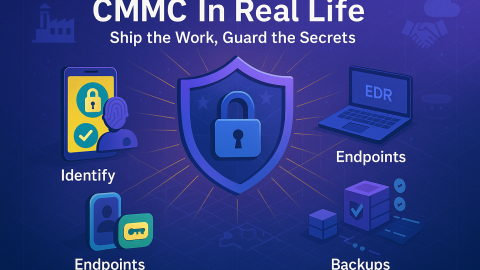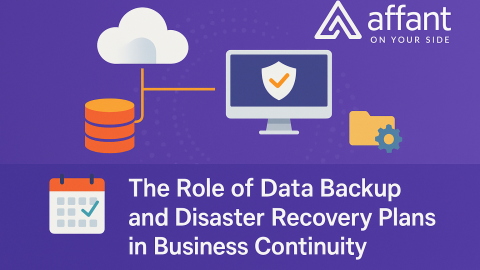Every December, the same scene plays out. Someone prints the spend report, everyone argues about why it is higher than last year, and three “temporary exceptions” sneak into next year’s plan. By spring, the cloud bill is inching up, seats do not match headcount, and overtime is back on the calendar.
It does not have to be like this. If you tighten a few repeatable habits now, you can roll into 2026 with lower run rate, steadier operations, and fewer awkward “why is this line item still here” questions.
Below is a practical way to do it. It is not a silver bullet. It is a short list of moves that pay off quickly and keep paying.
A quick story to set the tone
A 180-person services firm came to us in December with a familiar problem. Headcount was flat, but the IT budget rose 14 percent. No big projects. No growth spike. Just drift.
We did three things in three weeks:
- Right-sized collaboration licenses. Two profiles covered 87 percent of users. Premium seats dropped by 31 percent without breaking anyone’s day.
- Put the cloud to sleep at night. Dev and test shut off automatically. Snapshots pruned. Storage lifecycle turned on.
- Replaced “hero” after-hours with included coverage. Overtime fell off a cliff and the people who used to answer midnight calls started sleeping again.
By February their run rate was down five figures a month. Nobody noticed a “big change.” They noticed fewer surprises.
That is the goal for 2026: steady, boring savings that compound.
The four questions that decide your 2026 IT budget
Ask these out loud. If you cannot answer them in one sentence each, that is where the money is hiding.
- Do licenses match roles or people?
If roles drive licenses, cost shrinks when teams do. If people drive licenses, cost floats forever. - Do cloud resources follow the sun?
If non-production sleeps at night and on weekends, spend drops quietly. If everything runs 24/7, it will keep growing. - Is after-hours a line item or a service?
If nights and weekends rely on heroics, you are paying a premium. If they are included coverage, you are paying a predictable fee. - Do backups restore on schedule, not on faith?
A tested restore once a month is cheaper than one ugly incident. If you have not rehearsed one recently, budget for trouble.
Affant’s job is not to hand you a buzzword playbook. It is to make these four answers boring and true.
What to do before the calendar flips
Think of this as your eighty-twenty list. Short, sharp, and measurable.
1) Freeze the picture
Pull a live snapshot of:
- Active users by department
- Licenses by tier and add-on
- Top cloud workloads, instance sizes, storage growth, snapshots
- Ticket volume by type and time (especially after-hours)
- Renewals through April and their ugly fine print
Why it matters: arguments shrink when the numbers show themselves.
Affant’s part: we gather this from your tools and reconcile it with HR and finance so the counts line up.
2) Put spend into three buckets
- Keep: clearly used, correctly sized, tied to owners
- Shrink: same tool, fewer seats or lower tier; cloud with schedules and lifecycle rules
- Stop: duplicate platforms, zombie licenses, idle resources, “temporary” add-ons that became permanent
Why it matters: budgets stall when “maybe” is an option. Naming the buckets turns “maybe” into “do.”
3) Lock three guardrails so savings do not leak back
- Joiner–Mover–Leaver automation: licenses swap with roles and offboarding reclaims within hours
- Cloud hygiene: dev/test schedules, reserved or committed use where stable, storage lifecycle by default
- Included after-hours: replace overtime and stipends with shared coverage
Why it matters: one month of drift erases two months of savings. Guardrails stop drift.
A better conversation with finance (and the board)
Leaders do not want a tool list. They want a small map from “we spend too much” to “we spend less and still ship.” Try this framing:
- Outcome: reduce run rate for licenses and cloud, eliminate after-hours overtime, hold SLA or better
- Method: right-size to roles, schedule non-production, include after-hours, test restores
- Proof: one-page scorecard, monthly, with dollars avoided and risks reduced
- Risk controls: immutable backup, MFA on privileged access and remote entry, vendor lanes with timers, audit logs where they matter
- Timeline: decisions in December, savings visible in January, compound by Q2
That is the story budget owners sign.
What the one-page scorecard should show each month
If you cannot read it in a minute, it is too long.
- Licenses: total vs active users, premium seats as a percent, seats reclaimed from offboarding
- Cloud: instance hours saved by schedule, storage lifecycle impact, spend trend line
- Support: median time to first response and resolve, ticket volume per user, after-hours volume included (no surprise invoice)
- Security hygiene: patch currency, endpoint coverage, last restore test pass/fail and time to recovery
- Savings: dollars avoided this month and run rate reduction since last quarter
Affant produces this in your voice, not ours, and ties every number to an owner and a log.
The line items most likely to drop in Q1 (and how)
Collaboration suites
- Move shared mailboxes and rooms to free object types
- Limit recording/webinar/telephony to small, named groups with expiry
- Align tiers to role profiles and HR events
Cloud compute and storage
- Sleep non-production nightly and on weekends
- Prune snapshots over a sensible age and tier storage automatically
- Trade spiky on-demand for reserved or committed use where workloads are steady
Security stack overlap
- Consolidate agents and duplicate add-ons without losing coverage
- Keep what generates useful signal, retire what duplicates it
Telecom and voice
- Remove unused numbers, right-size call plans, and tidy contact-center seats
- Make failover boring and test it so you are not buying “just in case” capacity
Support and overtime
- Include after-hours in the agreement so you stop paying premiums for routine issues
- Standardize device builds to cut weird tickets and speed fleet-wide fixes
A simple, credible budget timeline
Now through mid-December
- Inventory finished; keep/shrink/stop decisions made
- Renewal re-quotes out; cloud schedules drafted
- Baseline OpEx set for 2026 (flat monthly, projects broken out)
Late December
- Policy switches on for JML automation, storage lifecycle, and monthly restores
- After-hours coverage moves to the partner
- Clear message to staff: what changes Jan 1 and who to call
January
- Scorecard #1: seats reclaimed, instance hours saved, SLA performance, avoided overtime
- Edge-case cleanup: stubborn premium seats, duplicate tools, vendor access that needs a timer
February and March
- Renegotiated carrier and SaaS terms land
- Right-sizing and schedules tune based on measured usage
- Scorecard #2 and #3 show compound savings and fewer incidents
Affant runs the calendar, chases the quotes, and owns the scorecard so the plan survives real life.
Objections you will hear (and how to answer them)
“Everybody needs the premium tier.”
Show the last 90 days of feature usage. Most people do not use advanced recording, voice, or eDiscovery. Keep a fast exception path for projects that do.
“If we shut off dev at night, engineers will be blocked.”
Schedules pause machines; they do not delete them. A single click or API call wakes a workload. Add one “burst” pool for off-hours hot fixes if needed.
“After-hours will feel slower if it is ‘included.’”
Set explicit targets in the agreement and put them on the scorecard. When it is measured and reported, it rarely slips.
“Backups look green; we do not need more tests.”
Green jobs are not restores. A 15-minute monthly proof makes insurance, auditors, and your nerves happy—and it is cheaper than one public incident.
A pocket ROI sketch
Not a promise—this is how the math often shakes out once the basics land.
Say your combined SaaS, cloud, and support run $90,000 per month.
- Right-size licenses by 15 percent → $6,750/month
- Reduce cloud by 20 percent → $8,000/month
- Replace overtime with included after-hours → $3,800/month
- Avoid one $24k incident per quarter via tested restores → $8,000/month averaged
Total: about $26,550/month back. If comprehensive managed services cost $12–16k/month, you are ahead, with calmer operations.
Red flags that wreck savings
- “All inclusive” until 5:01 p.m., then fees start
- Forced tool stacks that serve partner quotas, not outcomes
- Multi-year lock-ins without performance off-ramps
- Pretty reports while users still complain
- Backups, patching, onboarding sold as add-ons
If you see these, do not negotiate. Walk.
What stays with you vs. what moves to your partner
You keep: strategy, vendor choices, budget control, industry-specific systems, and the narrative to leadership.
Affant handles: help desk, device care, patching, monitoring, backups, joiner-mover-leaver, routine network work, after-hours, vendor wrangling, and the monthly scorecard.
Some teams want co-managed. Others want fully managed. Either way, the aim is the same: fewer leaks, predictable spend, and days that feel normal.
Where Affant fits
Affant’s value is practical and measurable.
- We right-size licenses and cloud with proof you can hand to finance.
- We replace overtime with steady after-hours coverage that meets agreed targets.
- We standardize builds so tickets fall for boring reasons, not miracles.
- We automate offboarding so seats and hardware come back the same day.
- We test restores monthly and keep the receipts for insurers and auditors.
- We deliver the one-page scorecard that shows dollars avoided and risks lowered.
You keep the parts that make your business unique. We keep the undifferentiated heavy lifting from eating your week.










